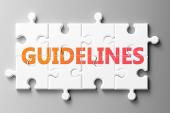Ischemic vs Bleeding Risks: Do Antiplatelet Guidelines Need Rethinking?
These documents have become too technical, too inconsistent, and rely too much on expert opinion, Marco Valgimigli argues.

Clinical practice guidelines on the use of antiplatelet therapy should aim to be more consistent in how they prioritize ischemic and bleeding risks across patient groups, argue the authors of a new commentary.
Using the 2023 European Society of Cardiology (ESC) guidelines for the management of ACS as a case study, Marco Valgimigli, MD, PhD (Cardiocentro Ticino Institute, Lugano, Switzerland), and colleagues detail discrepancies within the document over how to prioritize bleeding or ischemic risk in antiplatelet therapy decision-making.
For example, in patients receiving oral anticoagulation (OAC), the guidelines prioritize bleeding prevention to guide decisions on dual antiplatelet therapy (DAPT) initiation and duration, the authors write. On the other hand, the same recommendations emphasize ischemic event prevention in patients not taking OAC, even when bleeding risk is “obvious.”
To TCTMD, Valgimigli said they focused on the most recent European guidelines “because it's the most recent one among both European and American guidelines. But most likely, most of the comments and criticism that we raise here will be applicable to other documents as well.”
“It is incumbent on guidelines to strive to endorse a consistent interpretation of the value of risks and benefits of different antiplatelet strategies in different settings given the evidence that ischemic and major bleeding events have prognostically similar impacts,” Valgimigli and colleagues say.
Their full arguments were published online last week in Circulation.
ACS Guidelines: A Case Study
The editorial breaks down the guidelines into specific examples of where clinicians might get confused. First, Valgimigli and colleagues point to triple antiplatelet therapy (TAT) in patients with atrial fibrillation (AF), for which they are already taking oral anticoagulation, who had undergone PCI for ACS. One week of TAT has a Class I recommendation for these patients, whereas TAT given for up to 30 days has a Class IIa recommendation.
“The endorsement of a single week of TAT with a Class I recommendation reflects the prioritization of a bleeding prevention strategy despite the documented greater risks of MI and stent thrombosis with this approach,” they write. “A tailored TAT duration approach based on bleeding versus ischemic risks seems more reasonable.”
Next, the authors highlight recommendations for patients with ACS with no indication for OAC. Here, the European guidelines give a Class I indication to a default 12-month DAPT strategy, so long as patients are not at high bleeding risk; there are Class IIa and IIb indications for a variety of de-escalation strategies regardless of patient bleeding risk.
Notably, they write, “a Class IIb recommendation to abbreviated (1 month) DAPT in patients at high bleeding risk exemplifies the prioritization of concerns about possible reduced ischemic protection with abbreviated DAPT (so far not documented across studies or individually or collectively appraised) despite the well-documented increase in major or clinically relevant nonmajor bleeding with standard DAPT.”
Valgimigli and colleagues cite further data showing that the type of P2Y12 inhibitor used after DAPT matters, but despite this, they say, “DAPT de-escalation was ranked lower than 12 months of DAPT (and not vice versa) and no guidance on the P2Y12 monotherapy type after a short DAPT was provided.”
Finally, the authors also mention pretreatment with a P2Y12 inhibitor, given a class III recommendation in the latest European guidelines for patients with NSTE-ACS without known coronary anatomy and early invasive management.
This recommendation was based on meta-analyses showing more major bleeding and no corresponding reduction in MACE with pretreatment, they argue. “The guidelines assigned priority to bleeding risk prevention for the timing of DAPT initiation, unlike the position taken for DAPT duration in patients not receiving oral anticoagulation, which seemingly reflects a prioritization of ischemic risk.”
‘Extremely Confusing’ Situation
Speaking with TCTMD, Valgimigli said the “fundamental lack of consistency” present in the document is “extremely confusing” and what bothers him the most. “We are not criticizing a specific position regarding a specific recommendation,” he explained. “We are simply saying: ‘Take whatever position you feel most appropriate, but please be consistent across the document.’”
Otherwise, he continued, “the clinicians will get mad because you keep changing the focus every time you discuss a different patient population.”
Valgimigli—who has served on and even chaired past guideline-writing committees, although notably not the most recent ACS document—said he wasn’t sure why the current recommendations have these inconsistencies. His best guess is this stems from the fact that different sections of the document are written by different experts and the reality that, sometimes at least, “opinions matter more than the evidence.”
His overarching complaint, however, is a lack of “coherent oversight.”
This missing element may explain why guidelines in general seem to be losing their traction with practicing clinicians, he said. “They are getting technical, they are getting difficult to be digested, and I think they are introducing too frequently personal opinions on top of evidence.”
In future guidelines, not just for ACS but others, Valgimigli would like to see more transparency as to who is contributing to individual sections as well as the level of agreement reached between task force members for each recommendation.
Counterpoints From Task Force Chair
To TCTMD, Robert Byrne, MBBCh, PhD (Mater Private Network, Dublin, Ireland), who chaired the ACS guideline task force, said the new paper was “elegantly presented” yet “flawed in its argumentation.”
He agreed that “the considerations they raised are likely relevant to all preceding guidelines in the field.” However, a big challenge in crafting guidelines is that the committee must balance internal consistency within the document with external factors like “previous guidelines on the topic as well as with guidelines on the management of other pathologies (for example, atrial fibrillation), provided that there's no change in the evidence,” Byrne explained.
Byrne had three main counterpoints to the specific claims made by Valgimigli et al. First, he said, guideline writers “consider primary efficacy and safety outcomes to be the strongest evidence on which to base recommendations,” adding that it’s not “correct” to compare individual components of ischemic endpoints, like stent thrombosis, with bleeding outcomes. Byrne explained that writing groups typically give more weight to numbers needed to treat and harm—which Valgimigli et al did not include in their editorial—than hazard ratios. “Even if the hazard ratio . . . is quite high, there may only be a very small number of events,” Byrne noted.
Secondly, he said, “there are important differences between the patients in the AF trials with OAC and those who don't have AF without OAC.” Patients with AF tend to be older, “and I think the impact of bleeding is more clinically important in these older patients, and I think that's a natural consideration for a guideline task force,” Byrne added.
Lastly, trials of abbreviated DAPT in patients without AF have “a number of important limitations” that affect how the guideline writers weighted them, said Byrne. “Arguably the most important limitation is that those abbreviated DAPT trials tended to only include patients who were alive and event-free after a certain period of time,” he said. “So rather than randomizing at the time of index intervention, which is real life, they would wait and, for example, randomize them at 3 months after the index event. So therefore, of course, anyone who died or had a serious adverse event does not tend to be represented in those trials, which means that these trials really only enroll lower-risk patients.”
With regard to pretreatment, the literature is “quite clear,” Byrne said. “We don't have any evidence of benefit, and there's risk only of harm, so I think the Class III recommendation is obvious.”
More generally, however, he agreed with Valgimigli’s call for more transparency in guidelines. “Suggestions to improve guideline processes are always welcome,” Byrne said, adding that the ESC is working to revise its guidelines for class of recommendations and level of evidence.
And as for the makeup of task forces, Byrne said these groups are strengthened by including a variety of members with different expertise, including patient representatives, that come together to make broad agreements. “Task forces can provide very balanced recommendations, and perhaps even more so than subject matter experts who may have a strong academic bias one way or another,” he said. “The recommendations do need to be considered as the consensus of the task force, and they're not the opinion of one or other subject matter experts in a field.”
The ESC will release its next iteration of the ACS guidelines in 2027, and the organization is currently recruiting task force members. An updated version of the American guidelines on ACS is expected to be released in the next few months.
Yael L. Maxwell is Senior Medical Journalist for TCTMD and Section Editor of TCTMD's Fellows Forum. She served as the inaugural…
Read Full BioSources
Landi A, Gorog DA, Valgimigli M. Swinging pendulum between risks and benefits of antiplatelet agents: a call for consistency in the interpretation of evidence and guideline recommendations. Circulation. 2025;151:126–128.
Disclosures
- Valgimigli reports receiving grants and/or personal fees from Abbott, Alvimedica/CID, AstraZeneca, Bayer, Biotronik, Bristol Myers Squibb (BMS), Chiesi, CoreFLOW, Daiichi-Sankyo, Department Klinische Forschung of Universität Basel, Health Life, Idorsia Pharmaceuticals, Medscape, Miracor, Novartis, Radcliffe, Terumo, and Vesalio.
- Byrne reports that he receives no personal payments, but that his institution receives research or educational grants from Abbot Vascular, Biosensors, Boston Scientific, and Translumina Therapeutics.





Comments